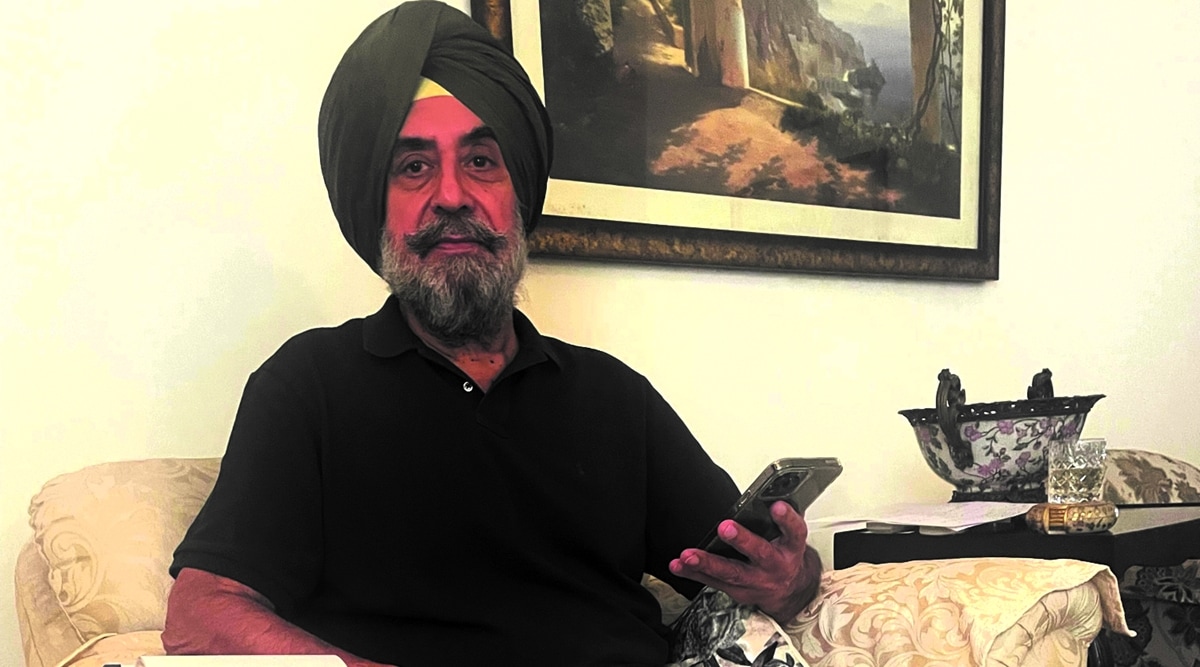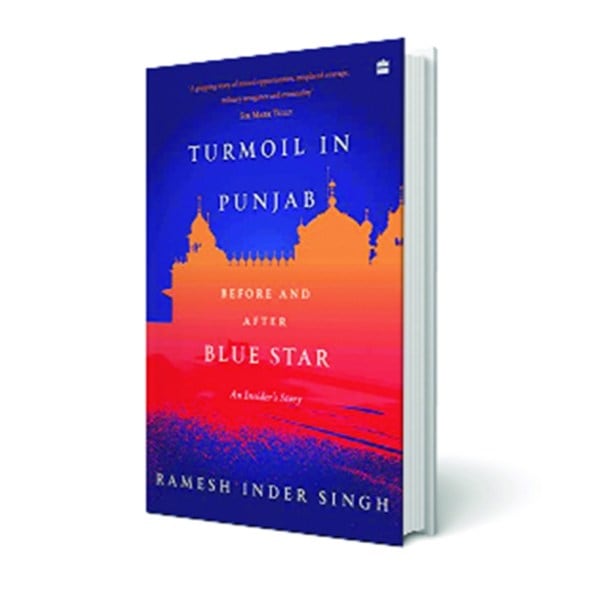 Ramesh Inder Singh
Ramesh Inder Singh“There are so many competing falsehoods about Operation Bluestar that I felt compelled to set the record straight,’’ says Ramesh Inder Singh, former chief secretary of Punjab and deputy commissioner of Amritsar during Operation Bluestar. Thirty-eight years after the operation that set in motion a trail of events that led to the killing of a Prime Minister, a Chief Minister, a former army chief, and thousands of innocents, RI Singh, as he is called in the bureaucratic circles, gives a tell-all account of those tumultuous years in his book ‘Turmoil in Punjab before and after Bluestar: An insider’s story’ which has been published by Harper Collins.
Singh took over as the Amritsar DC on June 4, just before Operation Bluestar to flush out militants from Golden Temple, commenced. Singh says his book, which is divided into two parts, attempts to sift the truth from its various versions on issues such as the purported demand for Khalistan, the rise of Sant Jarnail Singh Bhindranwale, his “collaboration” with Congress, the wavering Akali Dal, and the foreign hand that led to Bluestar.
The bogey of Khalistan
RI Singh says militancy in the state was never a Khalistan movement. “It started with the Akali-Nirankari clash in 1978. Between 1979 and 1981, militants targeted Nirankaris and their sympathisers in the administration. Killings of the innocents started with the arrest of Jarnail Singh Bhindranwale, a fiery priest from a modest farming family who headed the seminary Damdami Taksal.
Best of Express Premium
“Bhindranwale never said he wanted Khalistan. When provoked by journalists, at best he would say ‘I am not asking for it but I will not oppose it if the government gives it’. During this period too, he would take ideological cover by saying his fight was against Brahminwad.’’
Singh says that even in 1985, after the Delhi pogrom, a survey conducted by a professor of Delhi University found that only a minuscule five per cent of people in the state were in favour of Khalistan.
Khalistan was first formally demanded in April 1986 by Damdami Taksal supported five-member panthic committee whose members included Gurbachan Singh Manochahal. Singh says militancy in Punjab was not monolithic. “There was no unified command or leadership, at one time there were three panthic committees. While some members were propagating Khalistan, others were more or less criminals enriching themselves. Finally, they lost any goodwill they had and got discredited.’’
Congress and Bhindranwale
Singh also dwells on the alleged links between Congress and Bhindranwale. In the last chapter titled “Emergence of Bhindranwale’ , he cites a passage from a volume on the history of Congress, published to mark its 125th anniversary.
“Meanwhile, during their years in the wilderness, Zail Singh, in complete collaboration with Sanjay, picked up a relatively obscure, young and fundamentalist lay preacher named Jarnail Singh Bhindranwale with a view to building him up as a rival to the Akali leadership. It is inconceivable that they could have done so without Indira Gandhi’s consent. Sanjay and Zail Singh believed that by advocating extremist causes the young preacher would embarrass the Akali Dal.’’
Singh says the book carries a preface by Sonia Gandhi.
 ‘Turmoil In Punjab: Before and After Blue Star: An Insider’s story’ by Ramesh Inder Singh
‘Turmoil In Punjab: Before and After Blue Star: An Insider’s story’ by Ramesh Inder Singh Who ordered Op Bluestar?
Singh says the Cabinet sub-committee on political affairs met in May 1984 in which Pranab Mukherjee opposed army action but was overruled by then prime minister Indira Gandhi. Gen AK Vaidya was called on May 25 and told to execute the operation. “It was kept such a top secret that even the IB director did not know about it.” Alongside, the government continued its talks with the Akalis and the last meeting was held at RK Puram, Delhi, on May 26.
There have been various accounts of the casualties in the operation with SAD (Amritsar ) leader Simranjit Singh Mann putting the number between 25,000 and 30,000. Singh says the correct figure is 783.
The foreign hand
One thing that has always confounded people is the sudden end of militancy in the state. In an explosive revelation, Singh claims it was because then Prime Minister Benazir Bhutto gave information about militants to Rajiv Gandhi
“It was a quid pro quo. Rajiv was to withdraw forces from the Siachen but he did not keep his commitment and Benazir later accused him of backing out.”
Pakistan not only played a big role in bankrolling militants and giving them weapons and training, it also orchestrated the circumstances that led to army storming the Akal Takht.
A small chapter in the book is dedicated to flushing out of Islamic militants holed up in a mosque in Saudi Arabia two years before Bluestar. The Saudi forces went into the mosque but were beaten back. They called Pak commandoes who met the same fate. Finally, American and French commandos used armoured personnel carriers to drive them out.
“Bhindranwale was living in Guru Nanak Niwas, one of the administrative buildings in the complex when Babbar Khalsa men clashed with his followers due to which he shifted to the Akal Takht
Even Bhindranwale didn’t realise that he was being manipulated. ISI wanted him to shift to Akal Takht to re-enact the mosque experience. Army entering Guru Nanak Niwas wouldn’t have provoked the same reaction from the community,’’ says Singh.
AKALIS & THE SGPC
Singh says the moderate Akali leaders, be it former CMs Parkash Singh Badal and Surjit Singh Barnala or Shiromani Gurdwara Parbandak Committee (SGPC) chief G S Tohra, were like a weathercock, they turned their tails the way the winds blew. “No one had the courage to openly oppose the militants,” says Singh.
He recounts how after Bluestar, then Akal Takht Jathedar Giani Kirpal Singh, looked thunderstruck at the destruction, and said, “Eh ki ho gaya (What has happened?)”. “I said, ‘Didn’t you know, why didn’t you stop them?’ He said, ‘What could I do? I had told Tohra too. But they used to come with guns’.’’
Singh says though he could hear the guns during the operation, it was a shock when he saw the damage. “When I flew over the city on June 8 with then division commander Maj Gen Jamwal, it looked like something out of a World War movie.’’
The book says civilians in the vicinity also suffered heavy damage. ‘’A total of 162 shops were completely destroyed along with 23 residential buildings.’’
To all those wondering about the addition of another book to the body of work on the subject, Singh explains in the preface: “In Punjab, terrorism has been eliminated decisively. However, the deep, fundamental, ethno-socio-religious fault lines that led to the turmoil still persist. History has an uncanny habit of repeating itself, and we have to be on guard, for only the civilisation that draws lessons from their history and move forward prosper.”
- The Indian Express website has been rated GREEN for its credibility and trustworthiness by Newsguard, a global service that rates news sources for their journalistic standards.

